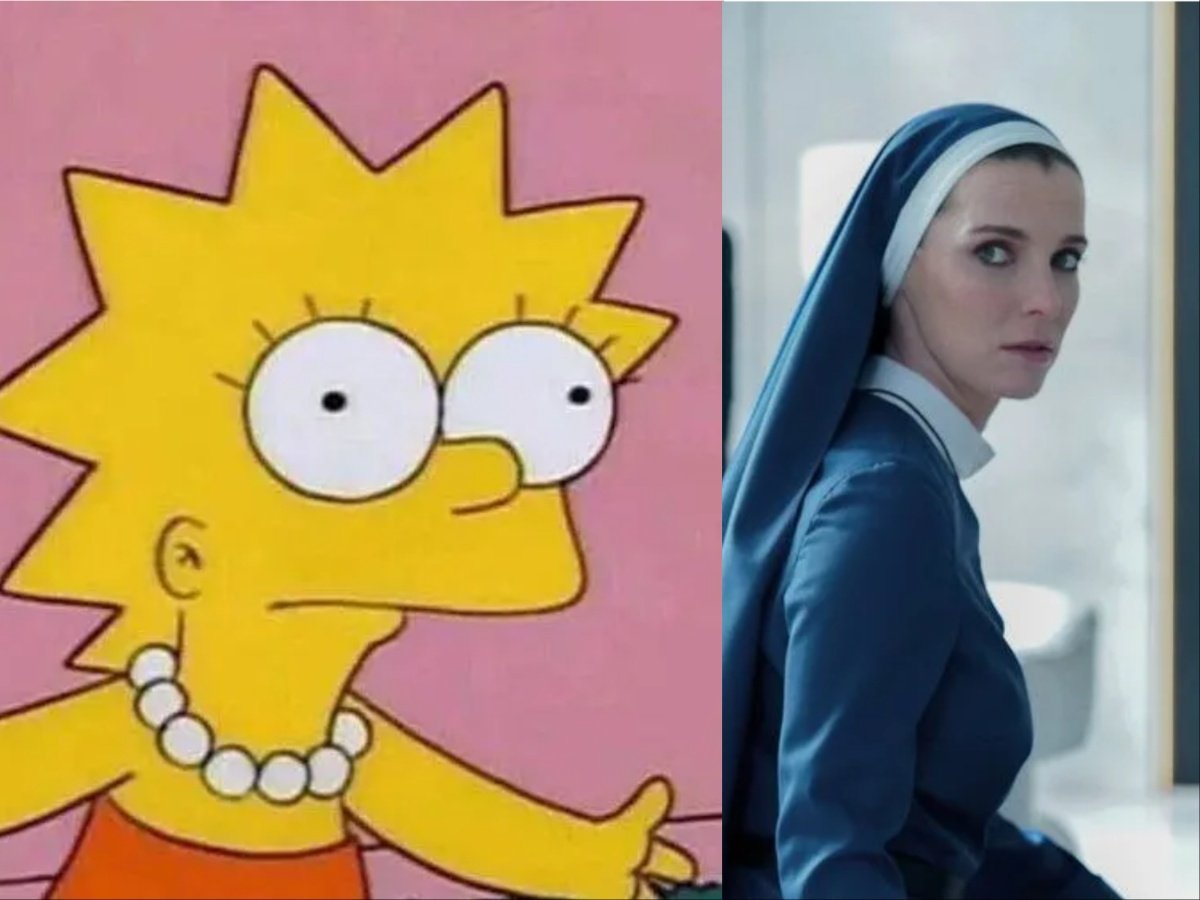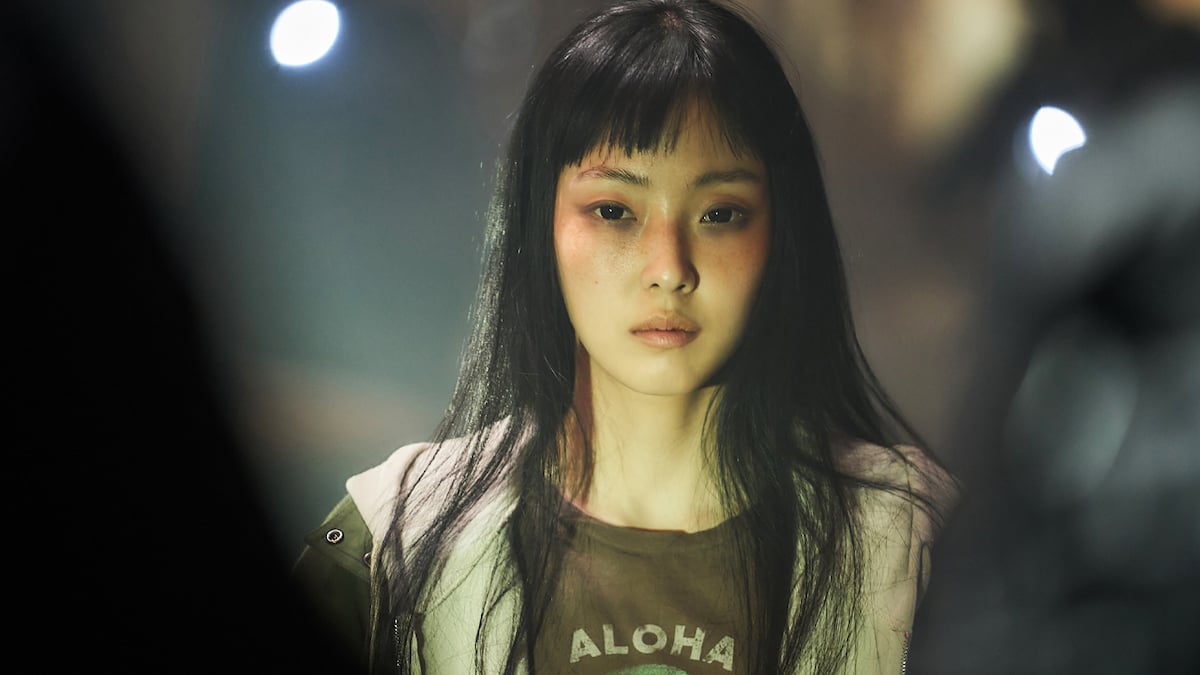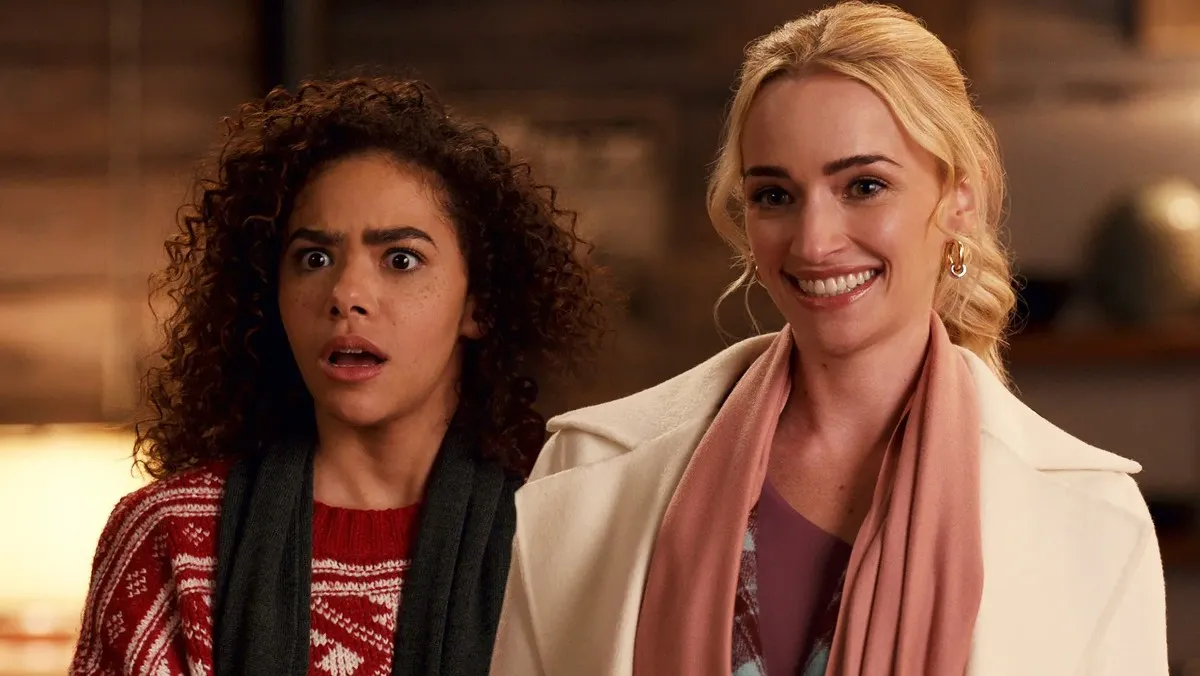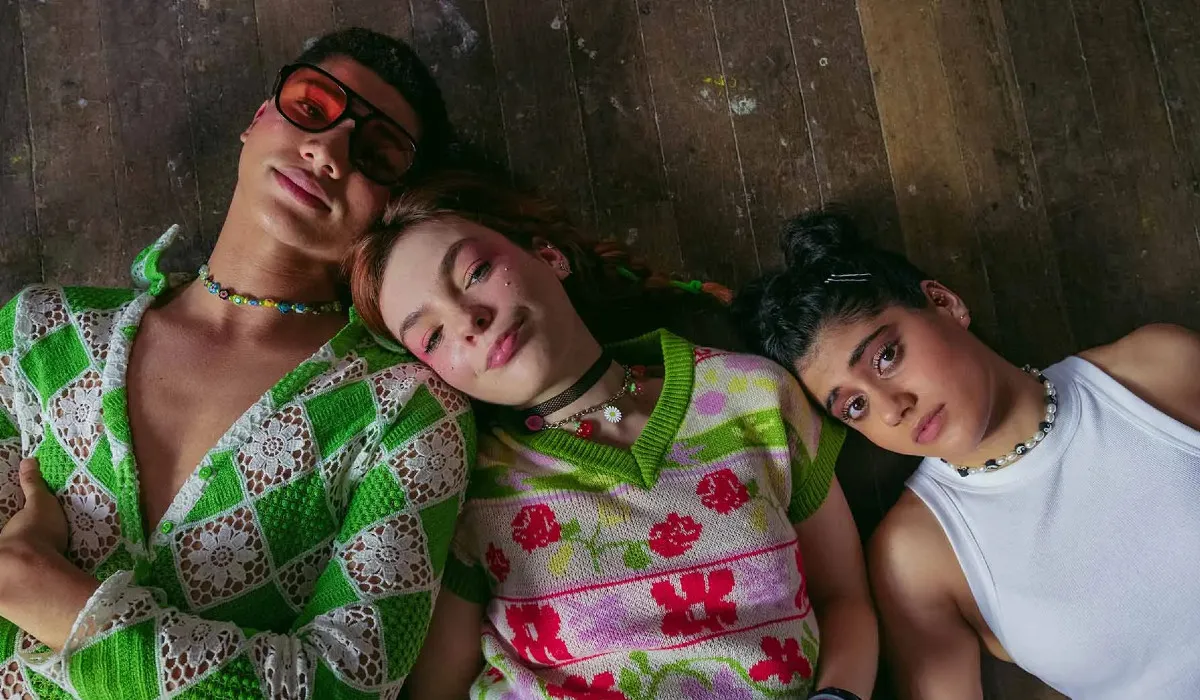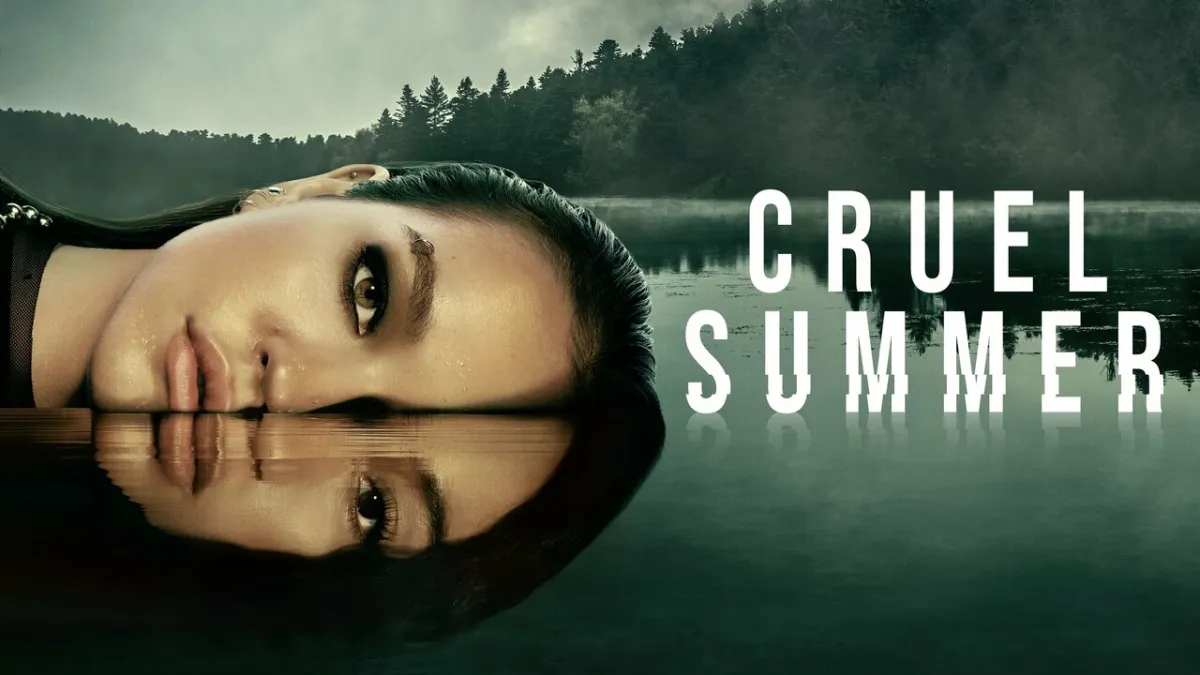Regular Mary Sue readers may remember that I wrote a very long, very passionate, very reaching article a while back after the initial trailer for Peacock’s Mrs. Davis dropped. Everything the trailer provided made me assume it’d be a long-overdue modern spin on the Arthurian canon, which, as a massive Nerd, made me very excited. In my mind, this show was gonna be like 10 Things I Hate About You: taking the core story and character traits, but making them fresh, fun, and new.
Instead, we got … well. we got Mrs. Davis, and I’m hesitant to say more because when I brought this up to my coworkers, responses were mixed, so your mileage may vary as well! Some loved it. Others found it bizarre but were able to truck on. And there were a few who, like me, gave up in the first episode, purely because the show’s WTF factor was a bit too gratuitous for our liking.
Here I’d been holding out for a Round Table-esque Quest for the Holy Grail, yet instead, I was given a series of wacky zacky boom-booms, one after the other. Our Rachel Leishman compared it to a Boots Riley production, and you know what? That’s apt. You could pair this show with an evening spent with Sorry To Bother You and it’d work just fine.
So, today, I’m not gonna rag on the show because I just haven’t given it enough of an honest try, nor do I plan to, since my dorky self was really hoping for some King Arthur action. Today, we’re going to focus on that action, and why, if creators are so eager to rehash the past, the Arthurian canon is a great place to dabble in.
What’s the deal with King Arthur, anyways?
When I was in middle school, I noticed a copy of Roger Lancelyn Green’s King Arthur and His Knights of the Round Table on display at a Barnes & Noble. Published by Penguin for a younger audience, its cover was simple, just a hand sticking out of water, gripping Excalibur. At that point in my life, I was curious about anything that could take my mind off my troubles, so as I stared at the cover, I wondered: What the heck is King Arthur even about?
That book ended up being one of the most-read books of my younger years. I ate it up in a day, and then I’d reread it, and I used it as the standard to which I compared other Arthurian novels. When I was a bit older, I graduated to Rosemary Sutcliff’s retellings and was transfixed by how authors could mutate the characters ever-so-slightly. Green’s rendition of the story was fairly straightforward—simple, yet gripping enough for a kid to get the gist. Sutcliff made the characters real, especially one of my favorite characters, Sir Gawain, who was a hot mess of emotion and inner turmoil.
Perhaps my favorite rendition, however, was T.H. White’s The Once and Future King, which I read in late high school. White took the basics of the most gripping stories within the canon (because to write all of them would take several years and pages), and then he incorporated them with doses of humor, humanity, and hysteria, the likes of which nobody had ever really done with the canon. The canon was this old tale, after all, mired in both history and religion. It probably felt untouchable to many authors. But White was a fascinating man, full of conflict himself, and his undertaking of this project was, in the end, more worthy than he could have ever predicted.
But if you’re wondering why these stories were so gripping to me, and many others (throughout history, mind), I truly can’t think of a better way to phrase it than this: the canon is sexy. Oh, god, it’s sexy. It’s compelling in a way that was designed to reflect our innermost virtues and wants. Originally, it existed as a piece of Briton pride, before becoming a vehicle by which religious values could be extolled. Yet all the way through, it has carried through a set of compelling characters and scenarios that were, at their core, romantic. The romance of it all is so deliciously juicy that it honestly astounded me the first time I read these stories! I remember grinning as a preteen when I realized that, all this time, the Knights of the Round Table were just slutty, slutty messes.
There is so much potential within this canon, and after such a long history of being reworked and added upon (I still have to read Chrétien and Mallory’s editions, good grief!), I just think we really ought to reexamine Arthuriana and start working with it in-depth again—and by in-depth, I don’t mean taking small portions of the canon (like the Holy Grail) and doing away with the rest of the story. I mean giving different stories The Green Knight treatment.
Why I can’t sing The Green Knight‘s praises enough
Many found David Lowery’s The Green Knight to be too long, overly convoluted, and just plain pretentious. When I told my friends that I saw it a whopping three times, they looked at me like I was talking nonsense. But here’s the thing: The beauty of The Green Knight is that it followed a very core story to the Arthurian narrative with loyalty, while adding newness to it in a tangibly beautiful way.
The original story of Sir Gawain and the Green Knight followed an impetuous Gawain, nephew to Arthur, who was hotheaded and ready to prove himself. Gawain had already been in trouble for his violent temperament, so he knew he was on thin ice. When the Green Knight rolled in, issuing a challenge—hit me if you can, nerd—Gawain leapt to it without a second thought. What ensued was a long journey that humbled him profoundly, turning him into one of Arthur’s most dependable, loyal knights.
Lowery’s rendition did what any good rendition does: He played around with the narrative in order to make it work for a movie. The visuals were bombastic, haunting, and added an aura of mystery that worked stupendously for this fable; in particular, I absolutely adored the emphasis on nature and how accepting it related to Gawain’s success. Gawain’s various trials were executed in a way that was thematically appropriate, and Lowery even included some lesser-used moments from the original fable, such as the Migration of the Giants.
One of my favorite modernizations was, as the below video discusses, the ways in which Gawain’s stay with the Lord and Lady was made psychosexual in a very queer way:
Perhaps the only thing I can strongly criticize this film for is the fact that it didn’t do much to explain its mysteries to people who weren’t already familiar with them. Not a single thing went over my head, yet most people I know who saw the film said it was like watching a foreign film with no subtitles.
For instance, I already knew that Gawain’s mother (who is typically Morgause, yet was instead made to be her sister Morgan Le Fay, which ultimately doesn’t matter too much) was Arthur’s sister, who hated Arthur for a variety of reasons and was always plotting against him. I knew that she used her sons, Gawain being the eldest, to scheme against Arthur without them even knowing. But this isn’t explained at all in the film, so newcomers were left to wonder: Why’s his mama being so evil for no reason?
If anything, though, this just reasserts my opinion that we need more Arthurian retellings, because we can’t have the people thinking it’s all abstract artsy-fartsy mumbo-jumbo! I mean, I certainly love that, but I don’t want the takeaway to be that Arthuriana is inaccessible.
Guys, those knights get so sloppy; it’d be a shame to keep it all to our nerdy selves.
Oh, the potential!
I’m already starting to get a little long-winded, so I’ll leave you with a quickie. Tristan and Iseult is about two doomed lovers who die together and end up being reincarnated as trees that twist around each other for the rest of time. Gareth the Kitchen Knight is about a guy who shows up pretending like he’s not the youngest brother of a prominent family and goes to rescue a noblewoman, fighting through four tiers of super tough color-coded knights, all while the noblewoman’s sister continuously negs him. Percival was raised in the woods with little to no human contact, then goes on to become one of the only knights who’s able to find the Holy Grail.
Now imagine all of this with modern humors and aesthetics. Juicy. Dramatic. Phenomenal. Showstopping. Romantic. Stupid. Delightful. Arthuriana is a goldmine, baby, and don’t you forget it.
(featured image: 21st Century Fox/Peacock)



